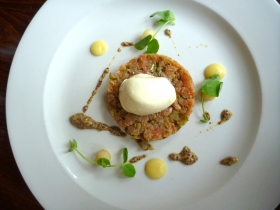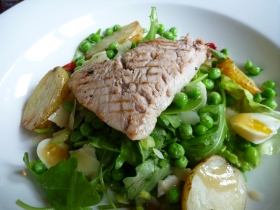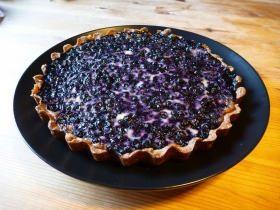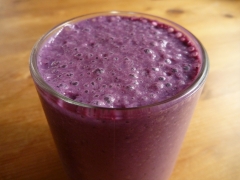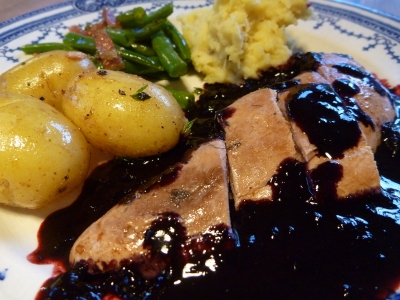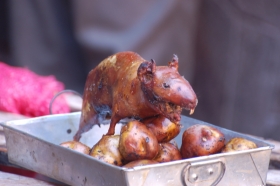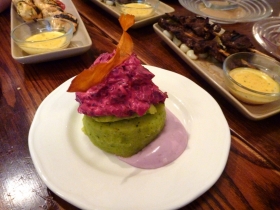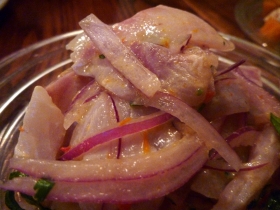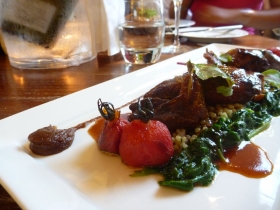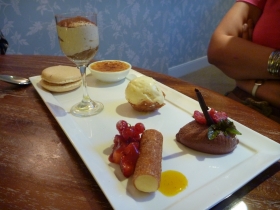Why do so many restaurants and cafes insist on putting cappuccino on their menu then serving up a huge cup of hot milk with a mouse’s bladder of coffee squirted into it and a spoonful of phlegm on top? Is it the misguided belief that bigger is always better? Is there a quiet majority of British punters that I’m entirely unaware of who actually like this? If anyone can inform me, please hit the Comments section. I know this isn’t just my own preference. I can quite easily imagine the reaction of any Italian presented with such a concoction: the initial look, mingling curiosity and surprise; the sip, followed by a very Mediterranean grimace; the shaking head and gale of disbelieving laughter.
Of course, the real villains are me and you, the consumer. Until we laugh at horrible coffee and refuse to pay for it, restaurants won’t improve. What would you do if you ordered “scallops with chorizo and cauliflower puree” and received a huge bowl of cauliflower puree with one tiny anaemic scallop perched on top and no discernible chorizo?
The Lion at Leintwardine, alas, is certainly a member of the crappuccino club. I’d love to say that the meal was by contrast faultless, but I can’t. It was decent enough. Let’s have a look…
For starter I chose chicken liver parfait, for two reasons: it was twinned with an intriguing “baby onion parfait” and boasted smoked brioche accompaniment. Well, the brioche was a bit dry and didn’t present any smoky flavour. And of course the menu was at fault; the onions were in the form of a sticky chutney, not a parfait at all. Boooo! In the event I didn’t complain, as the onions were delicious. The parfait was okay, but not as smooth or firmly textured as I’d like. Maureen’s tartare of smoked salmon lacked balance; the plentiful capers might have been fine with a salmon tartare, but with the already salty and smoked salmon they were overkill. The yogurt mousse and pickled apple accompaniments were a delicious hint of what the dish could have been.
My main of Gressingham duck arrived overcooked, but there was no problem sending it back and it appeared with a new piece of nicely pink duck in less than five minutes. Dauphinoise were pretty good, a fine gravy, but the confit garlic were quite harsh. Somehow I think including them in the cooking rather than scattered on as garnish
might have worked better. Maureen’s seared tuna was not. It was cooked tuna. To be generous, it was still moist enough to be palatable but a disappointment nevertheless. The warm salad of new potato, peas, sun-blushed tomatoes and soft-boiled quails eggs worked well enough for a gentle dish.Pudding. Apparently often the saving grace of a meal. Both nicely presented. My summer pudding was fine, though a bit heavy on the gooey bread. Maureen’s chocolate tart was fine, though a bit heavy on the pastry. I think the puds sum up the meal fairly well: it was all okay.
If you were staying at the hotel here you’d probably be happy enough with having this dining room downstairs. It’s a handsomely furnished small country hotel and the service was friendly and useful from everyone. And the food was okay. But at £45 each including a bottle of wine I’d say you should be able to find better.








